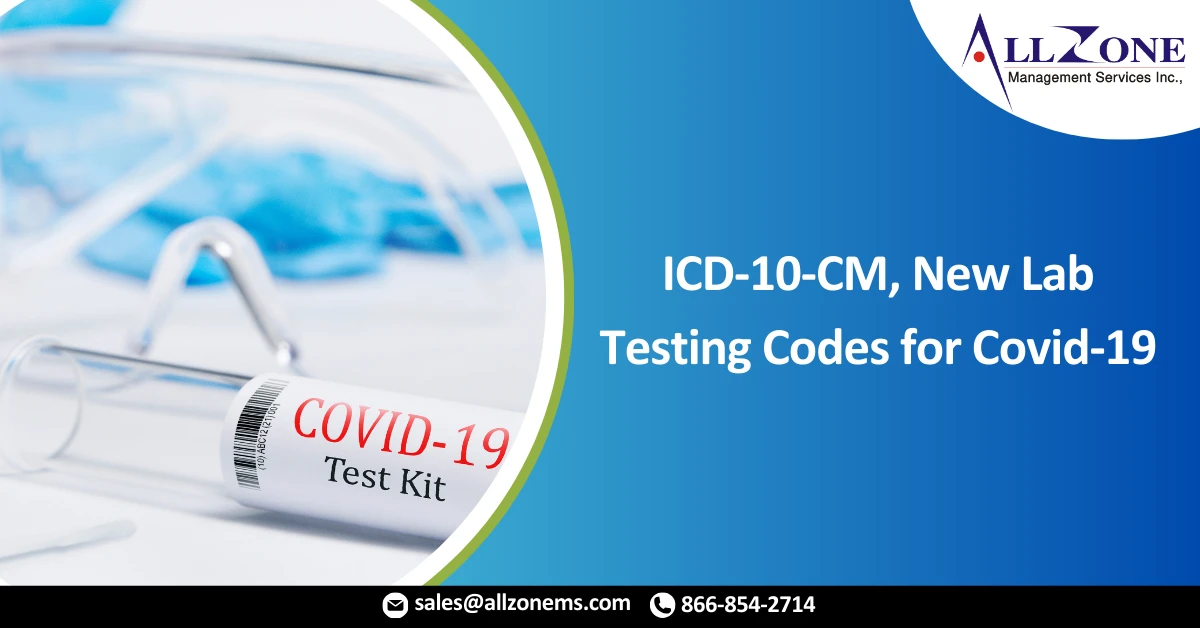The introduction of 2019-nCoV Coronavirus, SARS-CoV-2/2019-nCoV (COVID-19) in the United States has produced an influx of patients into the health care system. While knowing how to diagnose and treat these patients is vital, being able to appropriately capture this information for data tracking and payment also is important. The National Center for Healthcare Statistics has developed a resource for International Classification of Diseases, Tenth Revision, Clinical Modification (ICD-10-CM) coding that already is in effect.
COVID-19 attacks the respiratory system; therefore, suspicion of the disease typically will accompany respiratory conditions. A confirmation of COVID-19 will therefore be linked to a specific respiratory condition.
Coding guidance: ICD-10-CM
- Pneumonia: For a pneumonia case confirmed as due to the 2019 novel coronavirus (COVID-19), assign codes J12.89, Other viral pneumonia, and B97.29, Other coronavirus as the cause of diseases classified elsewhere.
- Acute bronchitis: For a patient with acute bronchitis confirmed as due to COVID-19, assign codes J20.8, Acute bronchitis due to other specified organisms, and B97.29. If the bronchitis is not specified as acute, due to COVID-19, report code J40, Bronchitis, not specified as acute or chronic, along with code B97.29.
- Lower respiratory infection: If the COVID-19 is documented as being associated with a lower respiratory infection, not otherwise specified (NOS), or an acute respiratory infection, NOS, report with code J22, Unspecified acute lower respiratory infection, with code B97.29. If the COVID-19 is documented as being associated with a respiratory infection, NOS, it would be appropriate to assign code J98.8, Other specified respiratory disorders, with code B97.29.
- Acute respiratory distress syndrome (ARDS): ARDS may develop in conjunction with COVID-19. Cases with ARDS due to COVID-19 should be assigned the codes J80, Acute respiratory distress syndrome, and B97.29.
- Exposure to COVID-19: For cases where there is possible exposure to COVID-19, but the disease is ruled out, report code Z03.818, Encounter for observation for suspected exposure to other biological agents ruled out. For cases where there is an actual exposure to someone who is confirmed to have COVID-19, report code Z20.828, Contact with and (suspected) exposure to other viral communicable diseases. This code is not necessary if the exposed patient is confirmed to have COVID-19.
- Signs and symptoms: For patients presenting with any signs/symptoms and where a definitive diagnosis has not been established, assign the appropriate code(s) for each of the presenting signs and symptoms such as: Cough (R05); Shortness of breath (R06.02) or Fever unspecified (R50.9).
Do not report “suspected” cases of COVID-19 with B97.29. In addition, diagnosis code B34.2, Coronavirus infection, unspecified, typically is not appropriate.
Coding guidance: procedural
There are no unique codes for evaluating and managing this condition; however, be sure to clearly document any additional time spent with the family or time spent coordinating any care that is not face-to-face with the patient and/or family.
Testing
There is no code for swabbing the patient for COVID-19, much like there is no code for swabbing for influenza. However, if the specimen will be prepared by your office and sent to an outside lab, report the specimen collection code 99000.
The Centers for Medicare & Medicaid Services (CMS) developed two new lab testing codes:
- U0001 will be reported for coronavirus testing using the Centers for Disease Control and Prevention (CDC) 2019 Novel Coronavirus Real Time RT-PCR Diagnostic Test Panel.
- U0002 will be reported for validated non-CDC laboratory tests for SARS-CoV-2/2019-nCoV (COVID-19).
If your office is not running the test for COVID-19 or incurring the cost, you will not report these codes.
The American Medical Association Current Procedural Terminology (CPT) Editorial Panel has developed a CPT code which streamlines novel coronavirus testing offered by hospitals, health systems, and laboratories in the United States. The code was effective March 13, 2020, for use as the industry standard for reporting of novel coronavirus tests across the nation’s health care system.
87635 Infectious agent detection by nucleic acid (DNA or RNA); severe acute respiratory syndrome coronavirus 2 (SARS-CoV-2) (Coronavirus disease [COVID-19]), amplified probe technique
Telehealth
As concerns arise over the easy spread of COVID-19, increasing the use of telehealth has been proposed. In this instance, telehealth is referring only to the synchronous live videoconferencing. Knowing your state laws and payer rules is important in this instance. (See resources for AAP fact sheet on coding for telehealth services and help in navigating your state laws on telehealth services.)
Advocacy and payment
The AAP is monitoring health plan carrier uptake of the new Healthcare Common Procedure Coding System (HCPCS) Level II codes: U0001 and U0002. Per CMS, the Medicare claims processing system will be able to accept this code for payment as of April 1 for dates of service on or after Feb. 4, 2020.
The Academy sent inquiries to the largest national carriers (Aetna, Anthem, Cigna, Humana and UnitedHealthcare) to ascertain their coverage policies. The carriers will offer the test with no patient out-of-pocket expense, and as of press time, Humana replied that it will follow CMS with retroactive coverage to Feb. 4, 2020. Carriers are waiting for CMS to value COVID-19 testing before establishing their fee schedules for the test. In the interim, providers should check their carrier contract regarding payments for services not included in the fee schedule (e.g., payment as a percentage of billed charges).
For More Information: https://www.aappublications.org/news/2020/03/12/coding031220

